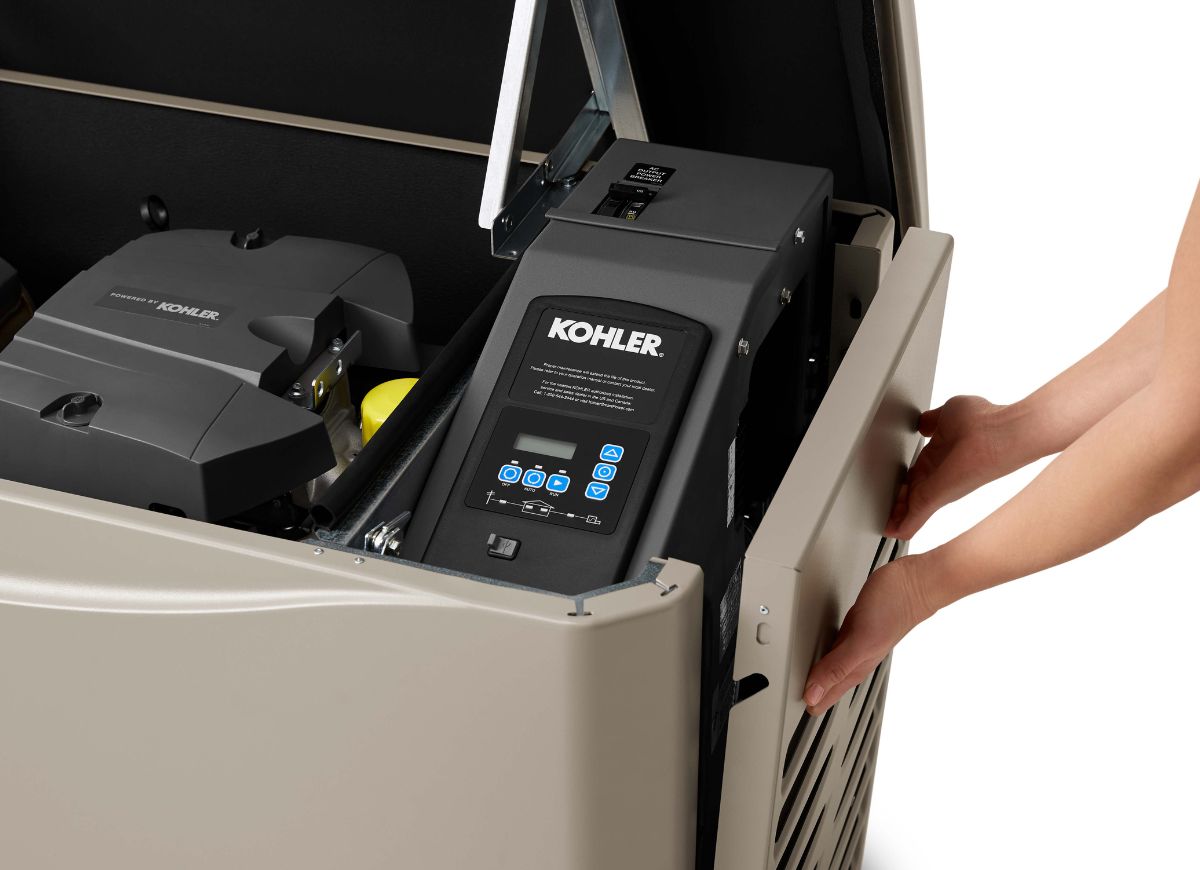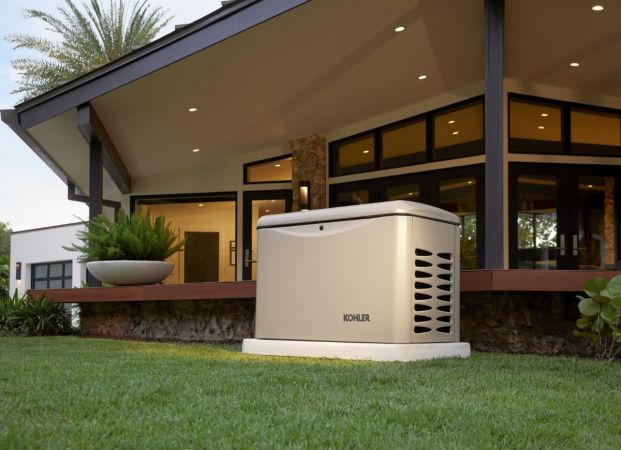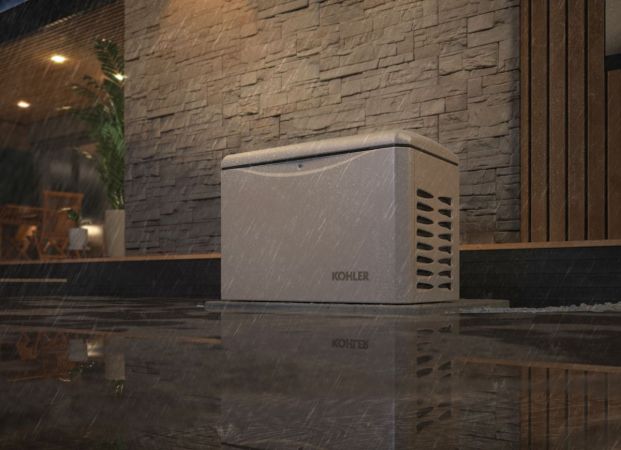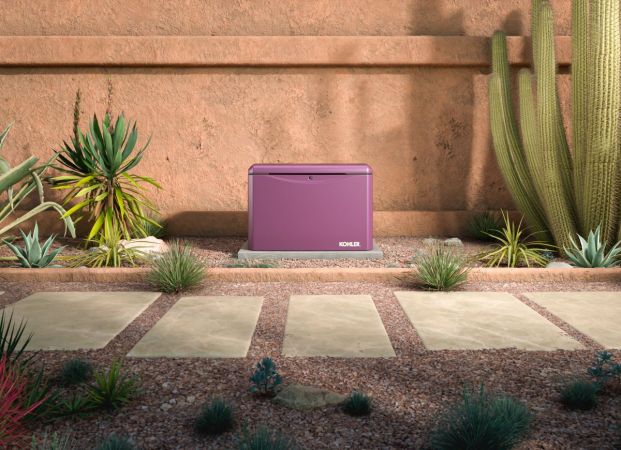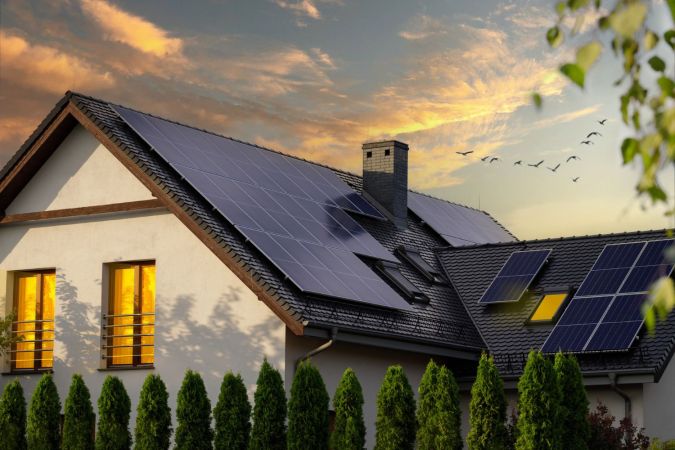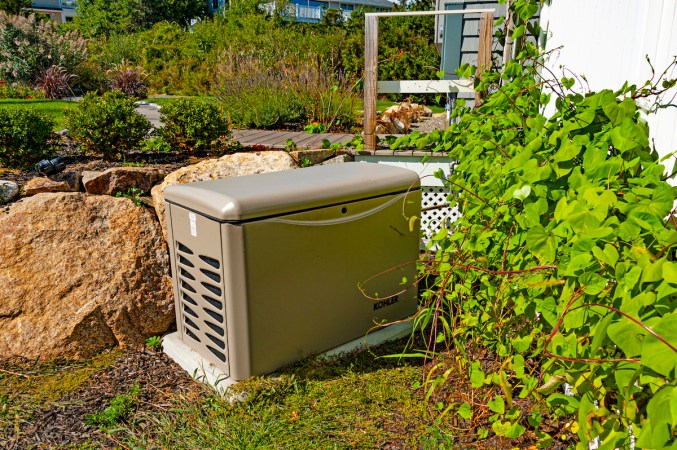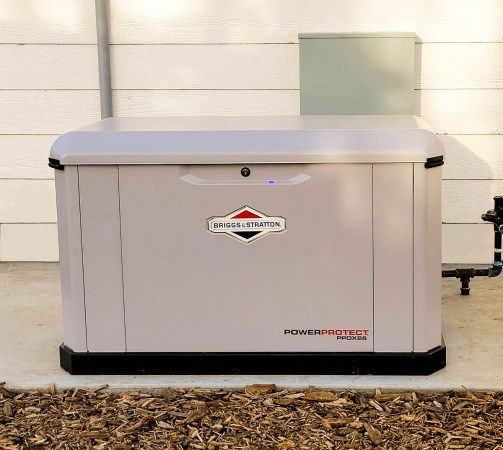We may earn revenue from the products available on this page and participate in affiliate programs. Learn More ›
This content has been brought to you by Kohler. Its facts and opinions are those of BobVila.com.
The hands-off nature of today’s most powerful, durable, and quiet standby generator means homeowners don’t really need to think about the inner workings of the machine. Still, understanding the basics outlined in this guide may help you appreciate the peace of mind that a seamless backup power solution like the KOHLER 26 kW Home Generator can provide during an outage.
At the most basic level, a generator works by burning fuel to produce electricity. Portable generators typically run on gasoline or propane, and they can keep a small set of essential electronics powered for a limited number of hours, depending on the model, before they need to be refueled. Standby generators are installed in a fixed position, where they use a home’s integrated natural gas or liquid propane fuel system and can automatically provide days or even weeks of backup power during an outage.
In order to know what you’re missing without a backup power supply, and to help you speak confidently to an installer should you determine that a standby generator is a wise investment for your home, let’s take a closer look at the function of a generator and its main components.
Kohler’s new 26 kW generators are powerful and exceptionally durable—precisely what you need to keep your home running during a power outage. Learn More About Kohler Generators
Converting Mechanical Energy Into Electrical Energy
The science behind generators is fascinating, but it’s important to note that homeowners don’t need to fully grasp every detail below in order to purchase or use a generator when the power goes out.
Generators operate using the principle of electromagnetic induction to convert mechanical energy into electrical energy. Scientist Michael Faraday discovered that voltage will be induced when there is a change in the magnetic environment of a coiled wire. The magnetic field strength changes by moving a magnet over a coil of wire or by moving a coil of wire through a magnetic field.
However, a strong, consistent force needs to be moving the wire fast enough to produce a practical amount of electricity. For this amount to be produced in a generator, the internal combustion engine provides enough mechanical force to generate a current by spinning a shaft, which in turn rotates an electromagnet called an armature.
The armature is positioned inside the stator, which is a stationary component that contains a set of electric conductors wound in coils over an iron core. When the armature rotates, it generates a moving magnetic field around the stator, inducing a voltage difference between the coil windings. The voltage difference produces the electrical current output of the generator. The voltage output of the generator is determined by the speed at which the armature moves through the stator, as well as the strength of the magnetic field.
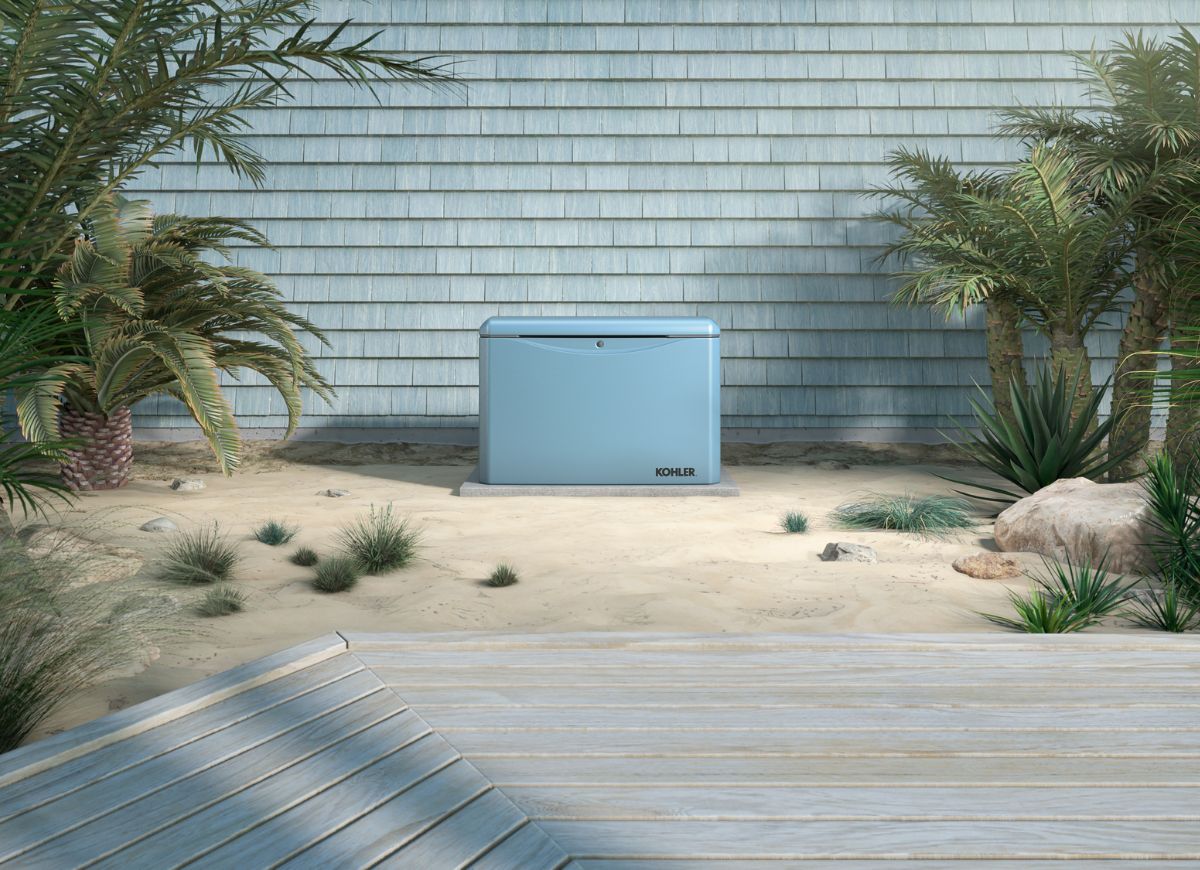
Main Components of a Home Generator
To better understand how a generator operates, you might want to learn more about the various generator parts and how each interacts within the system. The nine main components of a home generator include:
- Engine: The engine provides the mechanical energy necessary to create electrical energy. It burns fuel to rapidly spin the crankshaft and rotate the armature. The larger the engine, the higher the maximum power output of the generator.
- Alternator: A generator alternator refers to a series of parts that work together to produce electrical energy output from the mechanical energy input provided by the engine. The primary parts within the alternator housing include the stator, armature, and crankshaft. When the engine spins the crankshaft, the armature rotates rapidly inside the stator to induce a voltage difference and produce the electrical current output of the generator.
- Fuel: Home generators typically run on natural gas or liquid propane. Some models can operate on either fuel, ensuring that there is more than one option for powering the generator during an emergency.
- Exhaust: The combustion engine inside the generator burns fuel to provide the mechanical energy necessary to generate electrical energy. After the engine burns the fuel, the exhaust from this process must be vented in a safe location away from doors, windows, and other openings to the house or building. Typically, exhaust pipes are made of cast iron, wrought iron, or steel. The exhaust line should be freestanding instead of being supported by the generator engine. However, it is OK to fasten the pipes to the engine to minimize vibrations during use.
- Lubrication: Generators have a lot of moving parts that can quickly heat up, leading to significant wear and tear if the parts are not properly lubricated. It’s recommended to check the lubricating oil level frequently and especially after extended use; this ensures that the oil remains at the manufacturer-suggested level.
- Voltage regulator: A voltage regulator is responsible for regulating the output voltage of the generator. This is accomplished in several steps.
1. The voltage regulator first uses a small portion of the generator’s AC voltage and converts it into DC current.
2. The DC current is fed into a set of secondary windings in the stator, called the exciter windings.
3. The exciter windings are connected to rotating rectifiers. When the exciter windings produce AC current, the rotating rectifiers convert the AC energy into DC current, which is then fed to the armature.
4. The armature can now induce a larger AC voltage across the primary windings of the stator to produce a larger output of AC voltage.
5. The cycle continues to increase the output until the generator begins to produce the output voltage equivalent to the full operating capacity.
6. When the generator reaches full operating capacity, the voltage regulator reduces the amount of DC current until it produces just enough to maintain the generator’s output.
- Battery: A generator creates energy for direct use; it does not store energy within an internal battery. The battery for a generator is relatively small, serving the same function in the generator as it would in a car. Similar to a car’s combustion engine, the initial start function is powered by the generator’s battery.
- Control panel: The control panel is essentially the user interface of the generator, providing a variety of information: oil pressure, temperature of coolant, battery voltage, engine rotation speed, duration of operation, output current, voltage, and operating frequency. Generators with automatic start control panels will work with an automatic transfer switch system to automatically turn on the generator and switch the input power from the utility to the generator when an outage is detected. While portable generators should not be run when you aren’t home, standby generators are specifically designed to function without the need for constant supervision.
- Housing: The exterior of the generator protects the internal components from wind, rain, sleet, ice, snow, and UV rays. Generators will typically have a customized housing that ensures a high level of protection while giving the internal systems enough space to avoid overheating.
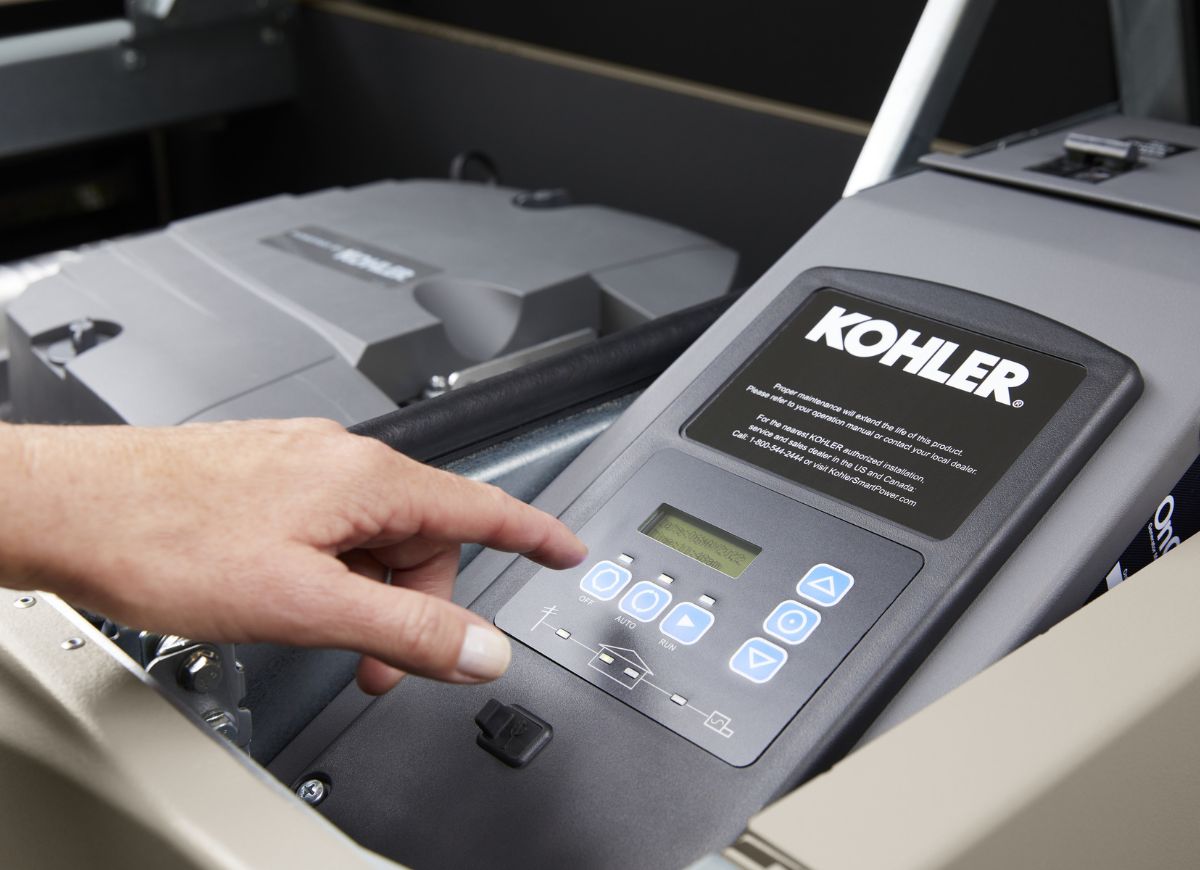
Powering a House With a Generator
Having a reliable standby generator, such as the KOHLER 26 kW Home Generator, is a good way to ensure that the most important home appliances, like the furnace, stove, refrigerator, and sump pump, remain functional during a power outage. Whole-house generators are connected directly to the home to provide backup power in case of an emergency.
A cable runs from the generator to a power inlet box, which is typically located on the outside of the home. The inlet box is then connected to an automatic transfer switch, which is responsible for switching the electrical load of the home from the utility to the generator. The transfer switch connects to the circuit panel, allowing the generator to provide electricity to all connected home electrical systems, appliances, and devices.
If the system has an automatic transfer switch, which is available for options like the KOHLER 26 kW Home Generator, then the generator will be able to detect when there is a power outage and automatically switch from utility power to generator power to support the home electrical systems. It will also automatically switch back to utility power once it’s restored. So even if you aren’t home, the generator can turn on and keep the home functioning normally without any issues. However, a manual transfer switch (as its name implies) will need to be operated manually before the generator can provide power to the home.

